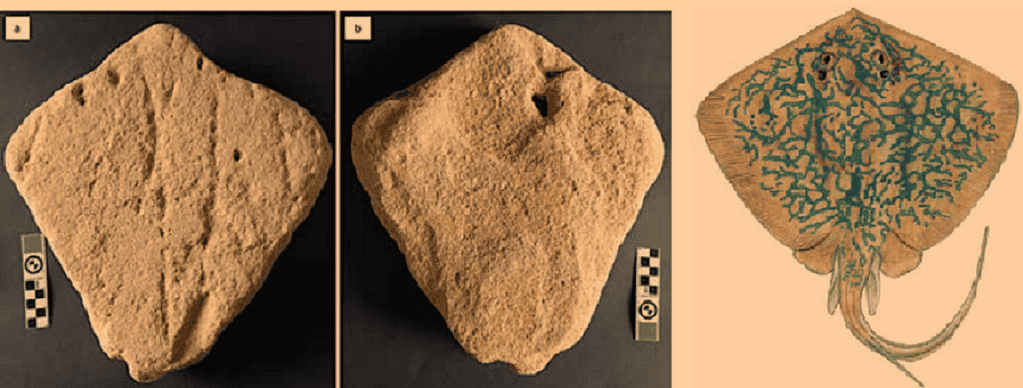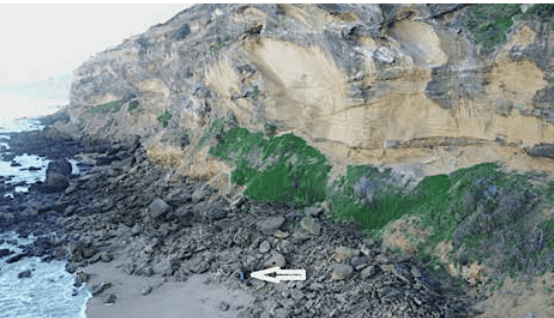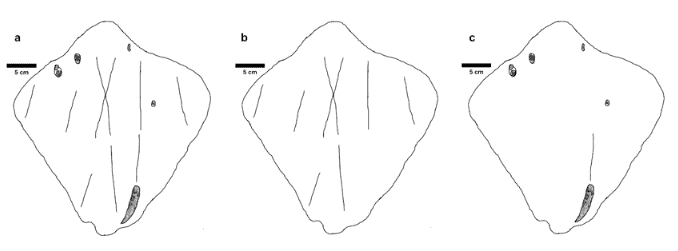The rock itself doesn’t look like much, and even the researchers aren’t entirely convinced this is a sculpture. But there’s a lot of circumstantial evidence hinting at it.

When it comes to archaeology or anthropology, there’s always a bit of speculation — and the older you go, the more speculation there is. History is murky, and ancient history is even murkier. Heck, it’s hard to figure out what happened centuries ago, let alone 10,000 years or more. So why is this 130,000-year-old rock from South Africa so interesting?
A curious stone
The story starts in 2008. Researchers were working in an area called Still Bay, some 205 miles (330 kilometers) from Cape Town, South Africa. The rocks in the area are eolianites — rocks formed from the cementation of sediment brought by wind. This type of rock generally forms around wind-blown sand dunes that, over time, solidify and often preserve any impressions or traces.
For a decade, the researchers described the fossilized tracks of large Pleistocene animals such as lions, rhinoceros, elephants, giant buffalo and crocodiles, as well as footprints left by hominins. The Pleistocene is the geological period that took place from 2.58 million to 11,700 years ago.
“Then, in 2018, one of our “citizen scientist” supporters, Emily Brink, spotted an intriguing rock east of Still Bay, about 330 km east of Cape Town. The rock was unusually symmetrical and was shaped uncannily like a stingray, minus the tail,” writes Alan Whitfield, one of the study authors, in an article on The Conversation.
Describing the rock
This particular rock first stands out because of its shape. It’s almost symmetrical, with grooves on one side that also appear to be symmetrical. The base of the rock is stubbed. If this is indeed a representation of a stingray, that’s where the tail would have been.
The research team posits that this could be an ammoglyph: an anthropogenic pattern or sculpture registered in unconsolidated sand, now preserved on a paleosurface of rock. Basically, someone would have carved the drawings into the sand, and the sand consolidated in this rock shape. The researchers suggest that this object may represent one of the earliest known examples of representational art, a significant leap in the cognitive and cultural development of Homo sapiens.
“Why do we use words like “posit” and “believe”, rather than being more confident and assertive? Firstly, we cannot prove our interpretation, and others cannot falsify it. It therefore represents speculation — although it is highly informed speculation based on our understanding of many tens of thousands of such rocks. Secondly, ancient palaeoart is rare in the archaeological record, and may be harder to recognise than more recent art: we really don’t know how much we don’t know,” the researcher notes.

Old art?
The researchers also used a technique called optically stimulated luminescence to date the rock. They found that it dates from the Middle Stone Age, around 130,000 years ago.
For comparison, the oldest confirmed Homo sapiens cave art dates to 43,9000 years ago in Indonesia. Some researchers have suggested that some Neanderthal cave art may be even older, at 57,000 years old. But this rock is more than twice that age.
The only known art that we can compare it to are some handprints made by children in the Tibetan Plateau. But researchers aren’t really sure if that’s art, and they’re not really sure if it was made by humans, either.
There’s another tantalizing clue. This rock was found relatively near to (30 km away) the Blombos Cave. This cave is renowned for its paleoart. That includes an engraving on ochre dating back 77,000 years and a 73,000-year-old drawing.

Significant if true
If this interpretation is correct, and if this is indeed a stingray carving, it’s important for several reasons. Firstly, it would be the oldest known example of humans creating an image of a creature other than themselves — by far. It would also show that 130,000 years ago, people were making sand castles and sand art, much like they do today.
There’s still a great deal of uncertainty regarding this interpretation. And it’s not clear whether this interpretation will ever be cleared up. But even amidst this uncertainty, the rock stands as a tantalizing testament to the potential depths of human creativity and symbolic thought — far earlier in our history than previously documented.
“Art is such an important part of our existence as humans. This means that ideas on how and when it began are of interest and importance to many. If our suggestion is correct, it would not only push back the time when our distant ancestors first created art of another species, but could also help explain what has until now seemed enigmatic: the seemingly sudden appearance of magnificent art on walls deep within caves in western Europe.”